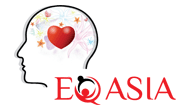“We cannot always control our thoughts, but we can control our words, and repetition impresses the subconscious, and we are then master of the situation.”
— Jane Fonda, TV actress
Managing your emotions consists of acknowledging the interplay between our thoughts, emotions, and behavior. Thoughts are almost always going through our minds. Sometimes we refer to this phenomenon as our ‘inner voice’ or internal narrative. Studies have shown that the average person has around 50,000 thoughts each day. Some of the thoughts that are constantly circulating in our heads are conscious thoughts, but many of them are unconscious thoughts of which we are not even aware.
Many of these thoughts underpin or cause an emotional response, affecting our mood and behavior. Because of the direct and indirect influences, the resulting emotional response may feel strangely out of sync with the reality of our lives in the moment. For example, we may suddenly become despondent or depressed for no apparent reason because the smell or sound of something triggered an emotional memory.
Interplay Between Feelings and Thoughts
The key to managing emotions and moods is to make sure that we are aware of what we are thinking and that those thoughts are in alignment with the life we are living and/or wanting to create. Directed thinking is one way to take charge of our emotions. It enables us to engage both our thinking and emotional parts of our brains thus the ability to manage feelings that are appropriate to different situations.
When we choose to take charge of our emotions, it doesn’t mean we are watering down our strong emotions. What it means is that we will be able to rationally think about the emotions we are having and have control over the reactions to those emotions. Positive thoughts often cultivate positive emotions and negative thoughts create negative emotions. One directed way to change how we are feeling is to change our thoughts accordingly.
For instance, anger is okay, but hitting someone or slamming your fist into the wall because you’re angry isn’t okay. Hitting is not a result of the feeling but an action we are choosing. We’ve all heard the saying, “Feelings aren’t right or wrong; they just are.” It is also important to understand that just because we are feeling something doesn’t mean that we have to react to that feeling. Everyone should take measured consideration of their feelings before acting on them. Feel and listen to what your heart is telling you. If you choose rational decision-making and only follow your head, you are cutting yourself off from the emotional intelligence that can help you make a better decision.
Finding Your Flow
Emotional intelligence attains its highest state in an experience described as “flow” or “being in the zone.” University of Chicago psychologist Mihaly Csikszentmihalyi found this period of peak performance in individuals who managed to harmonize thought and emotions. It is very common among elite athletes who suddenly whip the ball or bat effortlessly to feel as if their concentration completely drowns out the crowd and the competition. In this ‘flow’ state, emotions are not constrained or ignored but harnessed in a directed way. The hallmark of this state is also felt among musicians who describe the rapture of getting caught up in the moment but feeling simultaneously relaxed and in control. Time slows down. They feel and think through an action. A surgeon performing a delicate and dangerous surgery feels highly charged mentally and focused on the task at hand.
According to Daniel Goleman, “flow is a state of self-forgetfulness, the opposite of rumination and worry: instead of being lost in nervous preoccupation, people in flow are so absorbed in the task at hand that they lose all self-consciousness, dropping the small preoccupations — health, bills, even doing well — of daily life.”
Paradoxically, a high state of concentration and mindful focus are required to reach this state of ‘flow’ in which the self can let go and overcome emotional turbulence. This experience stands in contrast to emotional hijackings, in which our nervous systems completely hold our brains hostage. Take, for example, forced concentration that is fueled by worry and tension. Our brains in this state show increased cortical activity. But when concentration is effortless, the bare minimum of mental energy is expended.
Howard Gardner, a psychologist at Harvard University, used this idea of flow to mount a movement in educational reform. He believed in the idea of multiple intelligences among children and advocated for making learning fun for kids in order to recreate the optimal conditions of ‘flow.’
Flow is an internal state that signifies a kid is engaged in a task that’s right. You have to find something you like and stick to it…you learn at your best when you have something you care about and you can get pleasure from being engaged in.
Channeling emotions and regulating our moods toward a productive end, and tempering them with thought rather than letting them impede our thinking are hallmarks of achieving emotional intelligence. Emotions can guide our actions rather than be our stumbling blocks.







